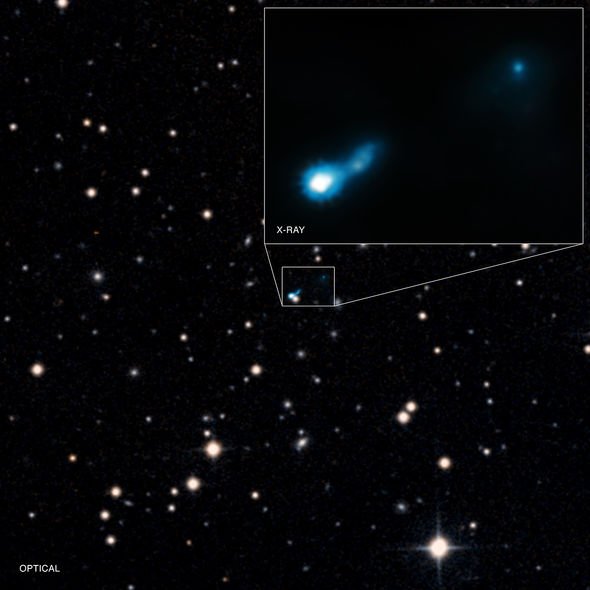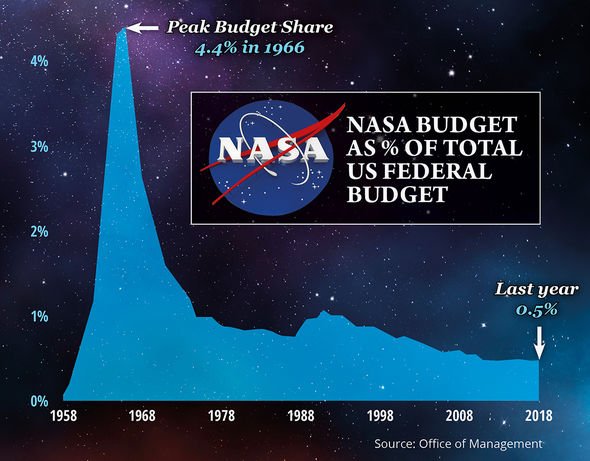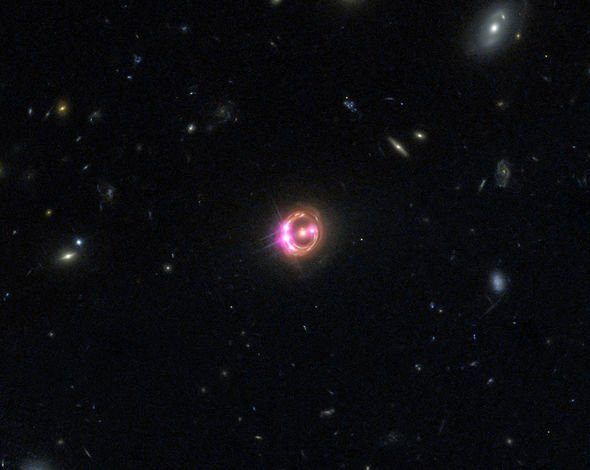NASA news: Astronomers witness a ‘tsunami rip across galaxies’ – Biggest flows in universe – Express.co.uk
NASA’S Hubble Space Telescope has observed the biggest outflows of energy in the known universe, a team of astronomers has announced.
The outflows are spewing from so-called quasars, which are extremely active galactic cores 1,000 times brighter than the millions of stars their host galaxies house. With the aid of NASA‘s Hubble Space Telescope, a team of astronomers has found 13 of these powerful blasts across the universe.
The outflows tear through the galaxies at breakneck speeds, “like tsunamis, wreaking havoc” on the galaxies in which they reside.
According to NASA, the quasars each contain supermassive black holes fuelled by the matter falling towards them.
As the matter falls towards the black holes, scorching gases surround the well of gravity and release radiation.
The quasars then release cosmic winds from the black hole, pushing material away from the galaxy’s centre.
READ MORE: Coronavirus is NOT the end of the world – What does Bible say?

NASA news: An artist’s impression of a quasar outflow streaming from a galaxy (Image: NASA/ESA/J. OLMSTED)

NASA news: Hubble picture of a quasar outflow in deep space (Image: NASA)
READ MORE
-

Top secret NASA project ‘testing hardware in space’
The outflows rush out of the galaxies at velocities approaching the speed of light.
Nahum Arav of Virginia Tech in Blacksburg, Virginia, principal investigator, said: “No other phenomena carries more mechanical energy.
“Over the lifetime of 10 million years, these outflows produce a million times more energy than a gamma-ray burst.
“The winds are pushing hundreds of solar masses of material each year.
“The amount of mechanical energy that these outflows carry is up to several hundreds of times higher than the luminosity of the entire Milky Way galaxy.”
Dr Arav’s discovery was published this month across six papers in .
You’d get a huge light show—like Christmas trees all over the galaxy
According to Gerard Kriss of the Space Telescope Science Institute in Baltimore, Maryland, NASA’s Hubble proved invaluable in the study:
He said: “Hubble’s ultraviolet observations allow us to follow the whole range of energy output from quasars, from cooler gas to the extremely hot, highly ionized gas in the more massive winds
“These were previously only visible with much more difficult X-ray observations.
DON’T MISS
Darwin was RIGHT: Darwin’s theory of evolution proven after 140 years [INTERVIEW]
Nostradamus predicted the coronavirus, claims author [INSIGHT]
Coronavirus did not originate in Wuhan [STUDY]

NASA news: Percentage of federal budget for NASA over the years (Image: EXPRESS)

NASA news: Quasars shine 1,000 times brighter than the stars in their host galaxies (Image: NASA)
READ MORE
-

Archaeology shock: Mount Ebal discovery ‘proves Bible story’
“Such powerful outflows may yield new insights into the link between the growth of a central supermassive black hole and the development of its entire host galaxy.”
The cosmic winds released by the quasars are powerful enough to disturb the natural process of star formation.
As the cosmic tsunami crashes into stellar material, temperatures rapidly spike to billions of degrees.
The blistering heat releases vast amounts of X-ray radiation and a glow in the visible spectrum of light.
Anyone lucky enough to see these cosmic events would be treated to a beautiful light show.
Dr Arav said: “You’ll get lots of radiation first in X-rays and gamma rays, and afterwards it will percolate to visible and infrared light.
“You’d get a huge light show—like Christmas trees all over the galaxy.”
The astronomers studied the 13 quasars by finding spectral “fingerprints” of light from the glowing light.
NASA’s Hubble is armed tools sensitive enough to observe the specific range of ultraviolet light to make the discovery.









